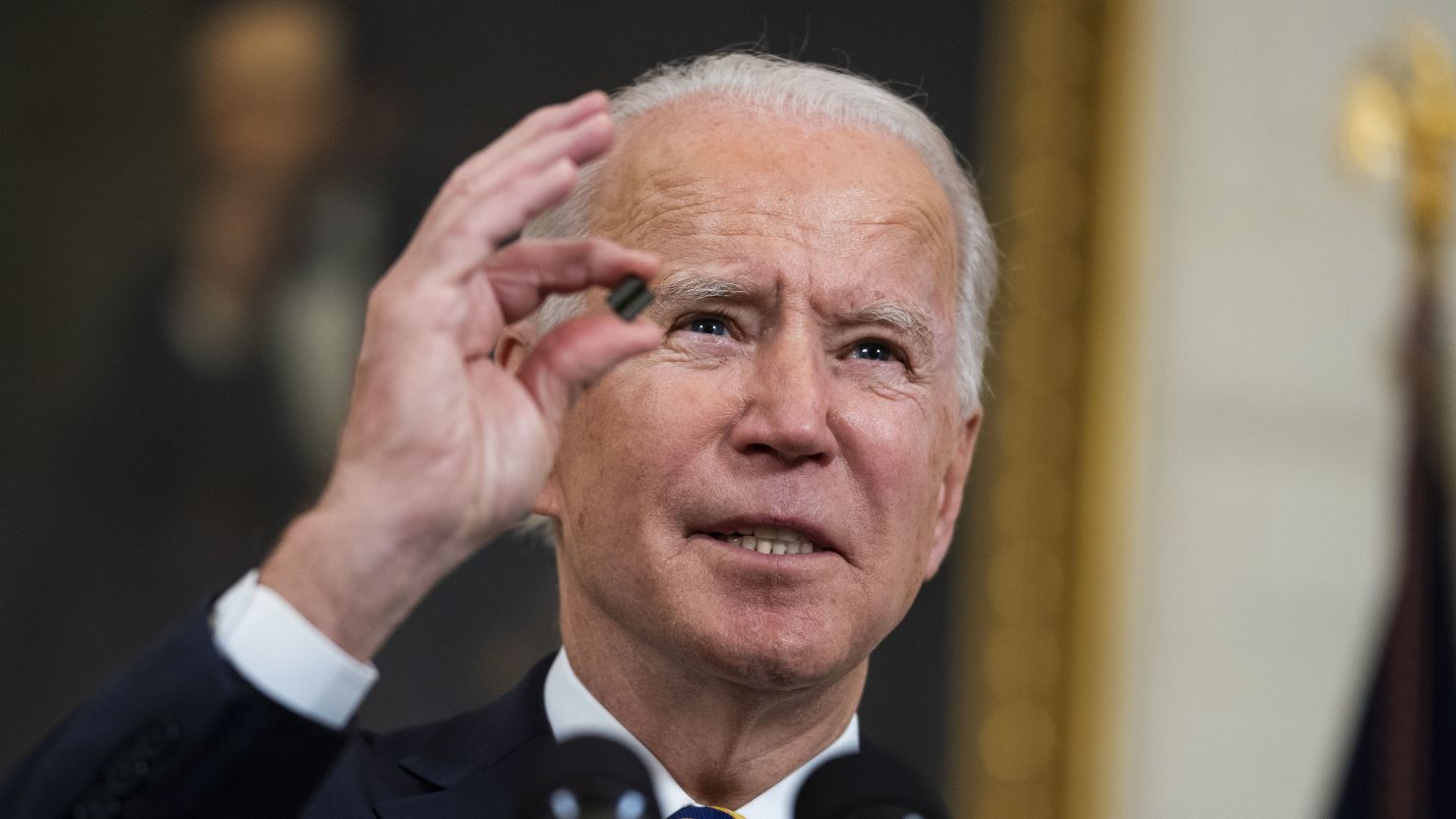A sweeping piece of legislation moving through Congress would invest billions of dollars in American manufacturing and scientific research, aiming to counter China’s growing economic influence.
The America COMPETES Act of 2022, passed by the House Friday, addresses some of the most pressing economic issues facing the Biden administration, including the global shortage of semiconductor chips and supply chain disruptions. Those problems have hamstrung the administration’s efforts to help the economy recover from the Covid-19 pandemic.
The bill would also change some US trade rules, designed to give American businesses a competitive edge on the global stage. A big focus of the legislation is countering China’s state-directed economic policies.
The Senate passed a similar bill in June with bipartisan support. Now, lawmakers must reconcile the differences between the House and Senate versions of the legislation and both chambers will have to vote again before the bill reaches President Joe Biden’s desk.
Here’s some of what’s in the House bill:
Investment in semiconductor manufacturing
The House bill would provide $52 billion over five years to boost semiconductor research, design and manufacturing in the United States, according to a summary of the bill provided by House Democrats.
There’s currently a global shortage of semiconductors, also known as chips, which are essential for the production of smartphones, medical equipment and cars. The shortage has led to delays for US manufacturers and increased costs. Both General Motors and Ford, for example, temporarily shut down plants over the past year due to the chip shortage, which was made worse by pandemic-induced supply chain problems.
Once a leader in semiconductor chip manufacturing, the US has lost ground as other countries like China ramped up production, forcing many American manufacturers to import chips made elsewhere. The share of semiconductor manufacturing capacity located in the US has decreased from 37% in 1990 to 12% today, according to the Semiconductor Industry Association.
The Senate bill similarly includes a $52 billion investment in the semiconductor industry.
Changes to trade policy
The House bill calls for a number of changes to US trade rules, aiming to level the playing field for American businesses and combat China’s market-distorting trade practices.
It would renew a program called Trade Adjustment Assistance that provides aid to American workers who lose their jobs or whose wages are reduced as a result of increased imports.
The House bill would also reauthorize the Generalized System of Preferences, a tariff program that eliminates duties on thousands of products from the world’s poorest countries – but the bill adds new eligibility criteria concerning the environment, labor standards and human rights.
The Miscellaneous Tariff Bill program, which temporarily suspends tariffs on certain imports, would also be renewed. The program helps provide a competitive edge to US companies that need to import materials required for manufacturing products at home. The House bill calls for excluding future finished products from the program, a way to incentivize American manufacturing.
The legislation would also strengthen US anti-dumping and countervailing duty rules, in a way that targets China’s Belt and Road Initiative – a massive infrastructure plan that spans many different countries and aims to connect China’s economy with other parts of the world. The changes would allow the trade remedies to be applied to subsidies provided by the Chinese government to Chinese companies operating outside of China.
The bill would empower the Office of the US Trade Representative to review and potentially block US companies from moving manufacturing abroad if the product is critical to the nation’s supply chain or a threat to national security.
It would also tighten eligibility for the existing de minimis threshold, which allows imports valued under $800 to enter the US without paying duties, taxes or fees. It would exclude imports from countries that are both non-market economies and on the US Trade Representative’s Priority Watch List for violations of intellectual property standards, such as China.
The Senate bill also calls for strengthening some of America’s trade rules. But House Ways and Means Chairman Richard Neal, a Democrat from Massachusetts, argues that the House bill is stronger. He said in a statement that the Senate legislation “falters both technically and ideologically” on trade policy and “overlooks the challenges facing today’s workers, and should be tougher on China.”
Strengthening supply chains
The House bill would provide $45 billion over six years in grants and loans to improve the nation’s supply chains and to boost American manufacturing of goods deemed critical for national security and the US economy – like products for public health, communications technology and food – according to a summary of the bill provided by House Democrats.
Similar to the Senate bill, it would create a new initiative within the Department of Commerce to help promote the resiliency of the nation’s supply chains. The House bill would establish an office that would monitor supply chains, identify vulnerabilities and designate which products are critical. The agency would also be tasked with building up stockpiles to prevent shortages of goods in the event of a future supply chain shock.
The House bill would provide another $3 billion for the nation’s solar manufacturing supply chain, aiming to reduce the country’s reliance on China for parts.
It would also create a $10.5 billion pilot program that awards grants to states to expand or maintain a strategic stockpile of certain drugs, medical equipment and personal protective equipment.
Funding for research and innovation
Both the Senate and House bills include billions of dollars for research and innovation.
The House version would provide $160 billion, according to House Science Committee majority staff. It would increase overall funding for the Office of Science, the lead federal agency supporting scientific research for energy applications and the physical sciences. The office operates 10 of the Department of Energy’s national laboratories and supports 25,000 researchers from industry, universities, national laboratories and other federal agencies.
The National Science Foundation would also get a boost in funding. The federal agency supports fundamental research and education in the nonmedical fields of science and engineering.
The funds would also help scale up science, technology, engineering and math programs, known as STEM, at K-12 schools as well as colleges.
This story has been updated with additional details.


